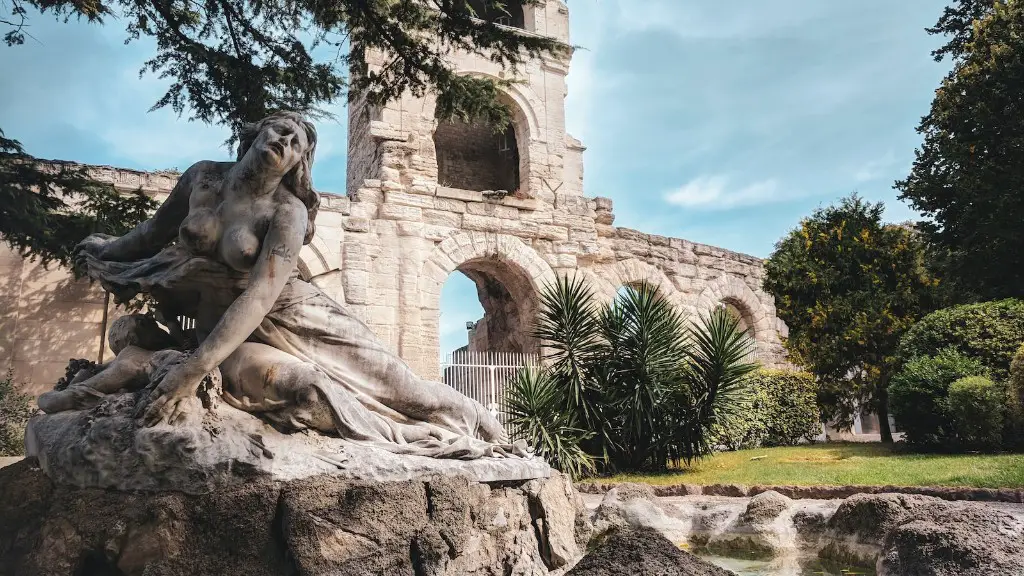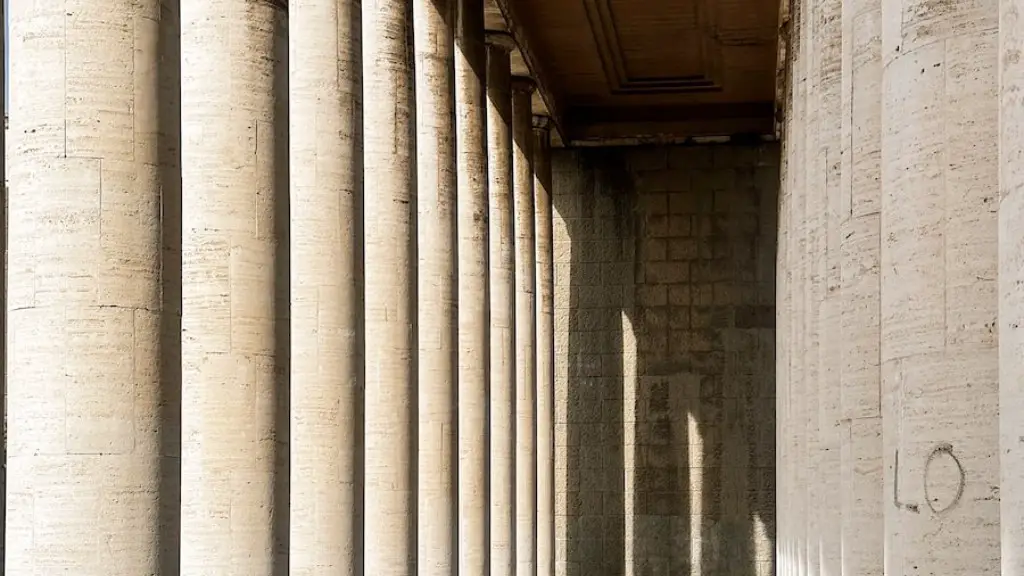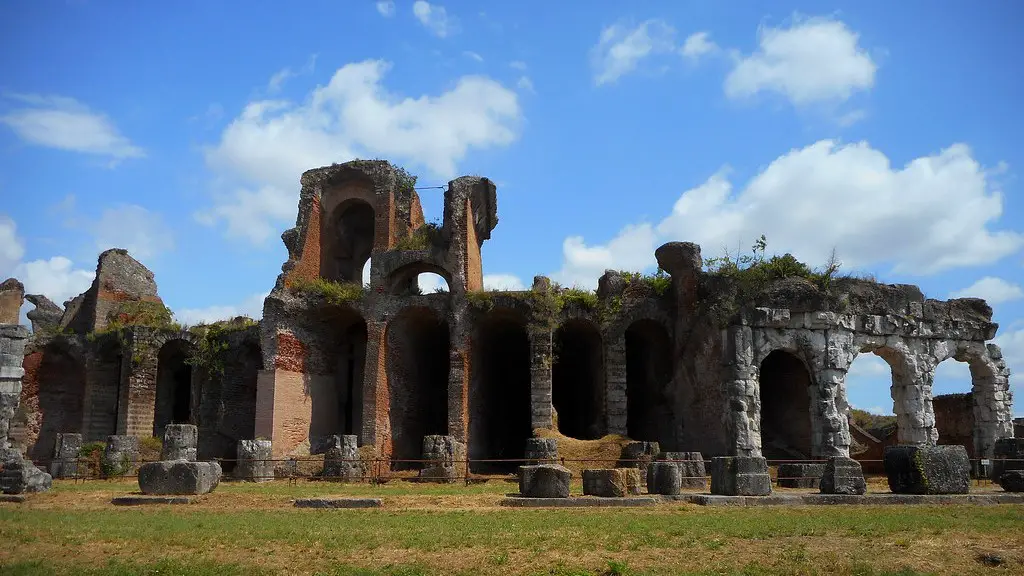Ancient Rome was an ancient civilization with a highly hierarchical society. It was composed of three distinct social classes. The patrician class was the highest social class and consisted of wealthy landowners, business owners, and some military leaders. The plebian class was the second highest social class and included farmers, artisans, shopkeepers, and some military personnel. The final social class was the slave class, which was made up of people who were either captured in warfare or inherited into slavery. This group had no rights and were the property of the upper classes.
Looking closer at the patrician class, it was made up of the most influential leaders in Roman society. They were the senators, magistrates, and other dignitaries who held the highest positions in society. They had the most money, land and political power and were the only ones allowed to participate in the Roman senate and legal system. They were viewed as being of the highest moral and intellectual quality, with the most power and status.
The plebian class was the second highest social class and was made up of the middle-class citizens. They were skilled craftsmen, shopkeepers, and farmers who owned their own businesses and supported the economy of the city. They had less wealth and political power, but they still had some rights, such as the right to vote. The plebians often clashed with the patrician class, since they didn’t have the same rights or privileges.
Lastly, the slave class was the lowest social class. Slaves were people who were captured in warfare or inherited into slavery. They had no rights and were the property of the upper classes. Slaves could be owned by the patricians or the plebians, and they were often used to work the farms and households of their masters. Often, slaves were worked to exhaustion and had no access to medical care or living wages.
Ancient Rome was an incredibly complex hierarchical society, with three distinct social classes. The patricians were the wealthiest and most powerful citizens, followed by the plebian class and lastly the slave class. Each social class had its own unique privileges and responsibilities, and the divisions between the three classes were rigidly enforced.
Changes in Social Class over Time
The social classes in Ancient Rome shifted and changed over time. Initially, the patrician class was the only social class, but over time, the plebians slowly gained more power and rights. For example, in 287 B.C.E, the plebians were granted the right to elect officials for the government. Additionally, the slave class was gradually abolished in the following centuries and eventually, the plebians and patricians were intermarrying and forming a single class.
Although the patricians still held a lot of wealth and political power, the plebians were beginning to gain more rights and privilege. This began to weaken the distinctions between the two classes, eventually leading to them becoming a single entity. It also led to more people becoming Roman citizens, as the criteria for citizenship slowly widened.
Furthermore, in the later years of the Roman Empire, a new social class emerged, called the equestrian class. This class was comprised of the wealthy business owners and merchants who gained power by making money off of the empire’s expanding trade networks. They had less political power than the patrician class, but they still had more wealth and influence than the plebians.
Cause of Changes
The changes in social class in Ancient Rome were due to a number of factors. One of the most important was the rise of the plebian class in the early Roman Republic. As the plebs gained more rights and power, they began to challenge the patricians and demand equal treatment, which was ultimately granted in the form of the political reforms of 287 B.C.E.
Additionally, the slave class was gradually abolished as the empire expanded and wealth began to flow more freely. The desire for profits on the part of merchants and traders meant that more and more people were starting to own their own businesses, which widened the criteria for citizenship. This also led to a weakening of the distinction between the patricians and plebians, as they began to intermarry and form a single class.
The Roman Empire also expanded into new territories and adopted customs and laws from other cultures, which further contributed to the changing social class structure of Ancient Rome. As trade and commerce grew, the equestrian class emerged and started to challenge the patricians for power and influence. This new group of wealthy business owners and merchants would eventually come to rival the patricians in terms of power and wealth.
Overall Impact
The three social classes in Ancient Rome had a profound impact on Roman society and ultimately contributed to the downfall of the empire. The rigid social hierarchy between the patricians, plebians and slaves was one of the major factors leading to discontent and unrest among the lower classes. This led to revolutions, uprisings, and civil wars, which further weakened the Roman Empire and ultimately led to its decline.
Moreover, the differences between the social classes also resulted in an unequal distribution of wealth and resources throughout the empire. The patricians held the majority of power and wealth, while the plebians and slaves were left with little or no access to resources and political power. This created a situation of widespread inequality and poverty, which further weakened the stability of the empire.
Conclusion
The three social classes in Ancient Rome consisted of the patrician class, the plebian class, and the slave class. Each class had its own distinct privileges and responsibilities, and the divisions between classes were enforced rigorously. Over time, the social classes shifted and changed, due to a number of factors such as the rise of the plebians and the emergence of the equestrian class. The social hierarchy of Ancient Rome had a profound effect on the Roman Empire, leading to discontent, civil unrest, and ultimately its decline.



